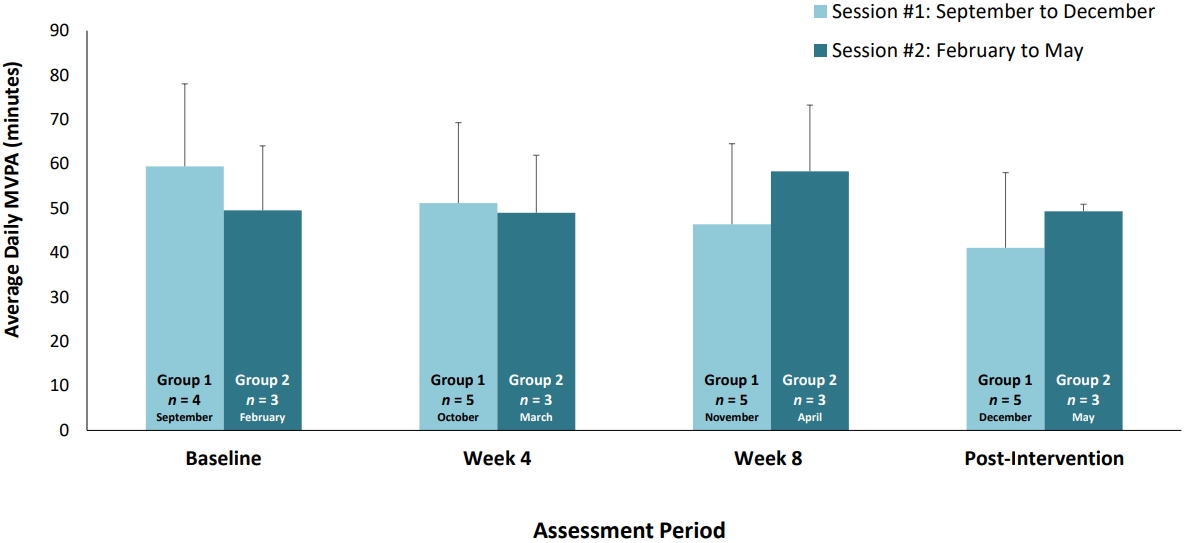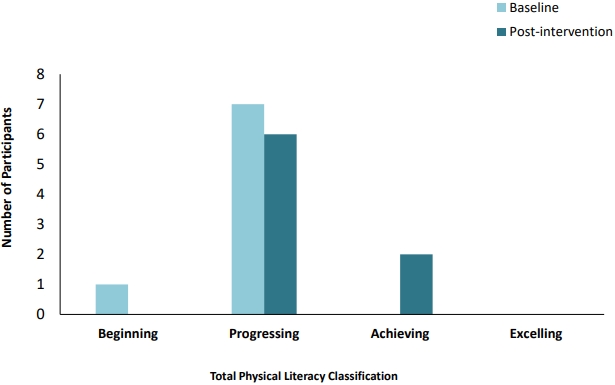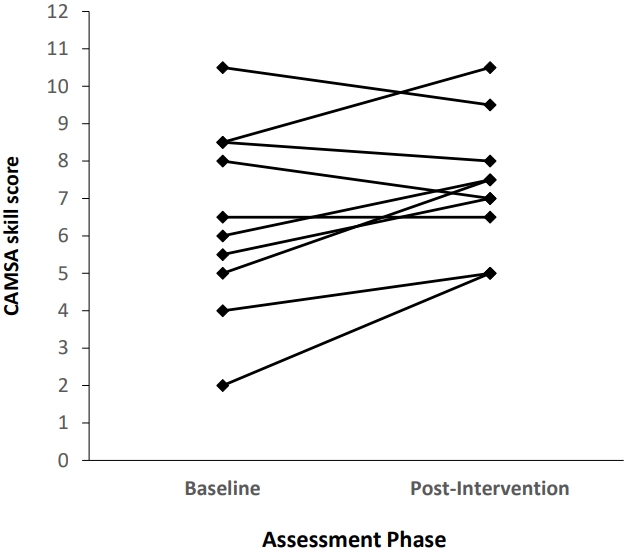2. Snyder AR, Martinez JC, Bay RC, Parsons JT, Sauers EL, Valovich McLeod TC. Health-related quality of life differs between adolescent athletes and adolescent non-athletes. J Sport Rehabil 2010; 19(3):237–48.


4. Harris K, Voss C, Rankin K, et al. Modifiable cardiovascular risk factors in adolescents and adults with congenital heart disease. Congenit Heart Dis 2018; 13(4):563–570.


6. Bopp T, Stellefson M, Weatherall B, Spratt S. Promoting physical literacy for disadvantaged youth living with chronic disease. American Journal of Health Education 2019; 50(3):153–158.

7. Roston T, De Souza A, Sandor G, Sanatani S, Potts J. Physical activity recommendations for patients with electrophysiologic and structural congenital heart disease: A survey of Canadian health care providers. Pediatr Cardiol 2013; 34(6):1374–1381.


8. Moola F, Faulkner G, Kirsh J, Kilburn J. Physical activity and sport participation in youth with congenital heart disease: Perceptions of children and parents. Adapt Phys Activ Q 2008; 25:49–70.


10. Holm I, Fredriksen P, Fosdahl M, Olstad M, Vollestad N. Impaired motor competence in school-aged children with complex congenital heart disease. JAMA Pediatr 2007; 161(10):945–50.

11. Marino B, Lipkin P, Newburger J, et al. Neurodevelopmental outcomes in children with conogenital heart disease: evaluation and management. Circulation 2012; 126(9):1143–1172.


13. Banks L, Rosenthal S, Manlhiot C, et al. Exercise capacity and self-efficacy are associated with moderate-to-vigorous intensity physical activity in children with congenital heart disease. Pediatr Cardiol 2017; 38(6):1206–1214.


14. Warnes C, Liberthson R, Danielson G, et al. Task force 1: The changing profile of congenital heart disease in adult life. J Am Coll Cardiol 2001; 37(5):1170–75.


15. Creswell J, Plano Clark V. Designing and conducting mixed methods research. SAGE Publications, 2018.
16. Gibson J. Interviews and focus groups with children: methods that match children’s developing competencies. Journal of Family Theory & Review 2012; 4:148–59.

18. Longmuir P, Boyer C, Lloyd M, et al. Canadian Agility and Movement Skill Assessment (CAMSA): validity, objectivity, and reliability evidence for children 8-12 years of age. J Sport Health Sci 2017; 6:231–40.


19. Scott SN, Thompson DL, Coe DP. The ability of the PACER to elicit peak exercise response in the youth. Med Sci Sports Exerc 2013; 45(6):1139–43.


20. Braun V, Clarke V. Using thematic analysis in psychology. Qual Res Psychol 2006; 3(2):77–101.

22. WHO Multicentre Growth Reference Study Group. WHO Child Growth Standards: Length/height-for-age, weight-for-age, weight-for-length, weight-for-height and body mass index-for-age: Methods and development. Geneva: World Health Organization, 2006 (312 pages).
https://www.who.int/childgrowth/standards/technical_report/en/.
23. Healy F, Hanna B, Zinman R. Pulmonary complications of congenital heart disease. Paediatr Respir Rev 2012; 13(1):10–15.


24. Takken T, Giardini A, Reybrouck T, et al. Recommendations for physical activity, recreation sport, and exercise training in paediatric patients with congenital heart disease. Eur J Prev Cardiol 2012; 19(5):1034–65.

25. Longmuir P, McCrindle B. Physical activity restrictions for children after the Fontan operation: Disagreement between parent, cardiologist, and medical record reports. Am Heart J 2009; 157(5):853–59.


26. Moola F, Fusco C, Kirsh J. What I wish you know: social barriers toward physical activity in youth with congenital heart disease (CHD). Adapt Phys Activ Q 2011; 28(1):56–77.


27. Reed J, Pipe A. The talk test: a useful tool for prescribing and monitoring exercise intensity. Curr Opin Cardiology 2014; 29(5):475–80.
28. Longmuir P, Brothers J, de Ferranti S, et al. Promotion of physical activity for children and adults with congenital heart disease. Circulation 2013; 127(21):2147–59.


29. Harvey W, Reid G, Bloom G, et al. Physical activity experiences of boys with and without ADHD. Adapt Phys Activ Q 2009; 26:131–150.


30. Cook B, Li D, Heinrich K. Obesity, physical activity, and sedentary behavior of youth with learning disabilities and ADHD. J Learn Disabil 2015; 48(6):563–76.


31. Lubans D, Morgan P, Cliff D, Barnett L, Okely A. Fundamental movement skills in children and adolescents: review of associated health benefits. Sports Med 2010; 40(12):1019–35.

32. Hamari L, Heinonen O, Aromaa M, et al. Association of self-perceived physical competence and leisure-time physical activity in childhood – a follow-up study. J Sch Health 2017; 87(4):236–243.


33. Longmuir P, Tyrrell P, Coery M, Faulkner G, Russell G, McCrindle B. Home-based rehabilitation enhances daily physical activity and motor skill in children who have undergone the Fontan procedure. Pediatr Cardiol 2013; 34(5):1130–51.


34. Muller J, Pringsheim M, Engelhardt A, et al. Motor training of sixty minutes once per week improves motor ability in children with congenital heart disease and retarded motor development: a pilot study. Cardiol Young 2013; 23(5):717–21.


35. Jahagirdar I, Venditti L, Duncan A, Reed N, Fleming S. Exploring the relationship between participation in a structured sports program and development of gross motor skills in children ages 3 to 6 years. J Occup Ther Sch Early Interv 2017; 10(3):203–12.














